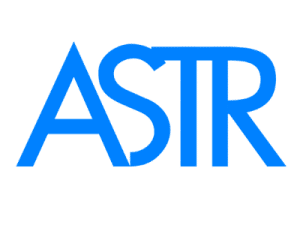Is the Keto or Paleo Diet Safe Long-Term?
Is the Keto or Paleo Diet Safe Long-Term?
Search terms: long-term keto safety, paleo diet risks, keto vs paleo health effects
Keto and paleo diets are often promoted as fast ways to lose weight, reduce inflammation, and boost energy. While both diets can offer short-term benefits, are they actually safe—and effective—long-term?
Let’s take a deeper look at the science, the risks, and what works better for sustainable healing and wellness.
🥩 What Is the Keto Diet?
Das ketogenic diet is a very low-carb, high-fat diet that forces the body into ketosis—a metabolic state where fat is used for fuel instead of glucose.
It typically includes:
-
70–80% calories from fat
-
Moderate protein
-
<5–10% of calories from carbs (often <30 grams per day)
✅ Potential short-term benefits:
-
Fat loss
-
Appetite suppression
-
Blood sugar control
-
Improved energy in some individuals
⚠️ Long-term concerns:
-
Nutrient deficiencies (magnesium, fiber, B vitamins, antioxidants)
-
Increased LDL cholesterol
-
Hormone disruption (especially in women)
-
Gut microbiome imbalance due to low fiber
-
Liver strain and gallbladder stress
“Long-term adherence to ketogenic diets raises concerns due to the potential for adverse effects on liver health, nutrient status, and gut microbiota.”
(Paoli et al., 2013)
🦴 What Is the Paleo Diet?
Das paleo diet emphasizes foods believed to resemble what early humans ate:
-
Grass-fed meats, fish, vegetables, fruits, nuts, and seeds
-
Excludes grains, legumes, dairy, refined sugar, and processed foods
✅ Potential short-term benefits:
-
Blood sugar and insulin regulation
-
Elimination of common allergens and processed foods
-
Reduced inflammation
⚠️ Long-term concerns:
-
Low variety of fiber and prebiotics
-
Lack of fermented foods
-
May be heavy in saturated fats and animal proteins
-
Difficult to sustain without reintroducing food variety
“Paleo-style diets can offer anti-inflammatory benefits short-term, but risk micronutrient and prebiotic deficiencies when followed rigidly over time.”
(Obert et al., 2017)
⚖️ Keto vs Paleo vs ASTR Diet
| Feature | Keto | Paleo | ASTR Diet |
|---|---|---|---|
| Carbs | <10% | Moderate (fruit/veg only) | Balanced, from clean sources (root veg, gluten-free grains if tolerated) |
| Fiber & Prebiotics | Often too low | Limited | Abundant from vegetables, roots, and seeds |
| Sustainability | Hard to maintain | Moderate, but restrictive | Highly sustainable and adaptable |
| Toxin Awareness | Often overlooked | Partial | Complete elimination of common dietary toxins |
| Hormone/Gut Support | Can disrupt hormones | Mixed results | Specifically designed to heal gut, hormones, fascia |
🌿 Why the ASTR Diet Is a Safer Long-Term Approach
Das ASTR Diet focuses on:
-
Anti-inflammatory whole foods
-
Clean, sustainable fats (olive oil, avocado, coconut)
-
Gluten-free and toxin-free ingredients
-
Balanced carbs to nourish hormones and metabolism
-
Gut-restorative nutrients and intermittent fasting
-
Adaptability for long-term success and healing
📘 For the complete guide to healing inflammation, fatigue, and pain through food, explore the Eat to Heal book.
✅ Final Thoughts
Keto and paleo can be helpful tools—short-term. But they weren’t designed for long-term, whole-body healing. Most people eventually experience symptoms from nutrient gaps, gut imbalance, or hormonal stress.
If your goal is sustainable healing, energy, and inflammation reversal, choose a diet that supports your biology without extremes.
The ASTR Diet offers that solution—rooted in science, built for the long haul.
📚 References
-
Paoli, A., et al. (2013). Beyond weight loss: a review of the therapeutic uses of very-low-carbohydrate (ketogenic) diets. European Journal of Clinical Nutrition, 67(8), 789–796.
-
Obert, J., et al. (2017). Popular weight loss strategies: a review of four weight loss techniques. Current Gastroenterology Reports, 19(12), 61.
-
Hallberg, S. J., et al. (2018). Effectiveness and safety of a novel care model for the management of type 2 diabetes at 1 year: an open-label, non-randomized, controlled study. Diabetes Therapy, 9(2), 583–612.
-
Mayer, E. A., et al. (2015). Gut/brain axis and the microbiota. The Journal of Clinical Investigation, 125(3), 926–938.

